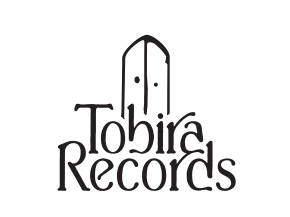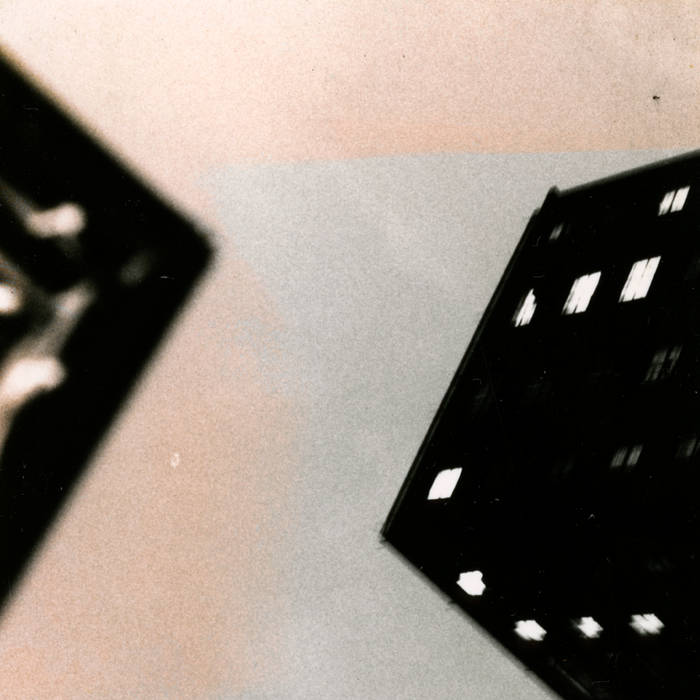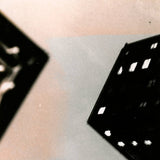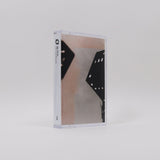Aki Onda // 99 Cent Dreams TAPE
- Availability:
日本の実験音楽家Aki Ondaが、2024年11月にアメリカ・LAの実験レーベルDinzu Artefactsからリリースしたカセットです。
物音コラージュスケープ2曲を収録。DLコード付属。
以下、作家本人による解説です。
"私は1998年から2003年にかけて、キャナル・ストリートから14番街まで、そしてバワリー(3番街)からイーストリバーまで続くニューヨークのロウアーイーストサイド(LES)周辺で、これらの音の断片を録音した。カセットテープの練習を始めた頃、私はレコーダーを持って歩き回り、まるで写真を撮るかのように、時には1秒にも満たないような短い音の断片を録音したり、深く聴き入ったりする習慣があった。これらの録音は、磁気テープに濃密なコラージュを刻み、私は約20年前にそれらをキャプチャしたのと同じ編集スタイルで、ここに音を提示する。
当時、LESは憧れの場所だった。この界隈には多くのアーティスト、映画制作者、ミュージシャンが住み、本物のボヘミアン・コミュニティの雰囲気があった。地域の大部分はランドマーク委員会によって保護され、家賃安定ビルも多かった。ジェントリフィケーション(高級化)により、LESに長年住んでいた人たちの一部はウィリアムズバーグやブルックリンの他の地域に移り住んだが、それ以外の人たちは家賃が安定した住戸に住み続け、何十年もそこに住み続けている。19世紀以来、この地域にはイタリア人、ユダヤ人、プエルトリコ人などの移民コミュニティが次々と居住してきた。イースト・リバー沿いのアルファベット・シティ(LESのうち、大通りに番号ではなく文字が振られている部分)には、昔も今もラテン系コミュニティが多い。これらすべての特徴が混在することで、街の他のどの地域とも異なる多文化的で控えめな雰囲気が生まれた。
私は、2番街とセカンド・アベニューの角にあるアンソロジー・フィルム・アーカイブス(AFA)で数え切れないほどの時間を過ごした。1998年、私はAFAの共同設立者の一人であるジョナス・メカスと知り合いになった。90年代に東京で彼の『Reminiscences of a Journey to Lithuania』(1972年)を初めて観た私は、メカスの作品に強い影響を受けたので、彼を訪ねたのは自然な成り行きだった。当時のAFAは、もっとカオスでアンダーグラウンドな場所だった。私たちは、ジョナスが写真スタジオを持っていた地下室にたむろしていた。他の部屋にはリトアニア人の友人が数人いた。ジョナスは私にフィルムカルチャー誌をくれた。私たちは近くのイタリアンレストランで昼食をとり、ジョナスのオフィスの延長のような、1番街と2番街の角にあるゴミゴミしたマーズバーに立ち寄った。AFAの上映会に無料でアクセスし、私は前衛映画のエッセンスを吸収した。私のお気に入りは William Klein's 『Muhammad Ali the Greatest』(1969); Ken Jacobs's 『Blonde Cobra』(1963); Michael Snow’s 『Rameau’s Nephew by Diderot』 (1974); Harry Smith's 『Mahagonny』 (1980) and 『Heaven and Earth Magic』 (1962); Bruce Conner’s 『The White Rose』 (1965); Milton Moses Ginsberg's 『Coming Apart』 (1969); Béla Tarr’s 『The Outsider』 (1981)などだ。映画の映像と音の混合に没頭することは、私の作品に滲み出る強烈な経験の蓄積となった。私はサウンドトラックをよく録音し、そのカセットテープは映画製作者の音に対するアプローチを研究する手段となった。
つまり、これらは単なる環境音でもなければ、私の個人的な生活の聴覚的記録でもない。私のフィールドレコーディングの実践は、LESの歴史、文化、精神と私を結びつけるツールなのだ。"
レーベルその他作品はこちら /// Click here to see more Dinzu Artefacts releases available at Tobira.
-------------------------
Includes DL code. Cassette in norelco case. Edition of 110.
Tracklist:
1. Part I 17:47
2. Part II 18:26
Artist statement by Aki Onda:
"I recorded these sound fragments between 1998 and 2003 in and around the Lower East Side (LES), an area in New York City that extends roughly from Canal Street up to 14th Street and from the Bowery (3rd Avenue) to the East River. In the formative years of my cassette practice, I had a habit of walking around with my recorder and capturing very short snippets of sound – at times less than a second, as if taking a photo – as well as some longer segments of deep listening. These recordings carved a dense collage on the magnetic tapes, and I am presenting the sounds here with the same editing style as I captured them almost 20 years ago.
Back then, the LES was the place to be. The neighborhood was home to many artists, filmmakers, and musicians, and there was a vibe of genuine bohemian community. A large portion of the area was protected by the Landmarks Commission, and there were many rent-stabilized buildings. Gentrification eventually priced out some of the long-time residents of the LES, who moved to Williamsburg and other parts of Brooklyn, but the rest held on to the rent-stabilized units and have been residing there for decades. Since the 19th century, the area has been inhabited by a succession of immigrant communities, including Italians, Jews, and Puerto Ricans. Toward the East River in Alphabet City (the part of the LES where the avenues are lettered rather than numbered), it was, and still is, a largely Latinx community. The mixture of all of these characteristics created a multicultural and low-key atmosphere that was different from any other part of the city.
I spent countless hours at Anthology Film Archives (AFA) on the corner of 2nd Street and Second Ave. In 1998, I became acquainted with one of AFA’s co-founders, Jonas Mekas. I first watched his Reminiscences of a Journey to Lithuania (1972) in Tokyo in the '90s, and Mekas’s work became a strong influence on me, so it was a natural consequence to visit him. AFA was a more chaotic, underground place back then. We would hang out in the basement, where Jonas had a photography studio. A few of his Lithuanian friends occupied the other rooms. Jonas gave me copies of Film Culture magazines, which were excellent resources to trace film history. We would have lunch at an Italian restaurant nearby and end up stopping by the trashy Mars Bar on the corner of 1st Street and Second Ave, which was almost like an extension of Jonas's office. With free access to AFA’s screenings, I absorbed the essence of avant-garde cinema. My favorites were: William Klein's Muhammad Ali the Greatest (1969); Ken Jacobs's Blonde Cobra (1963); Michael Snow’s Rameau’s Nephew by Diderot (1974); Harry Smith's Mahagonny (1980) and Heaven and Earth Magic (1962); Bruce Conner’s The White Rose (1965); Milton Moses Ginsberg's Coming Apart (1969); Béla Tarr’s The Outsider (1981), and so on. Immersing myself in cinema’s mixture of visual and sound became a powerful accumulation of experiences that bled into my work. I often taped the soundtracks, and those cassettes became a way to study filmmakers' approaches to sounds.
So, these are not just environmental sounds nor are they aural documentation of my personal life. My field recording practice is a tool to connect me to the history, culture, and psyche of the LES, which exists as much in the realm of the imagination as it does in the coordinates of topology."
Artist : Aki Onda
Label : Dinzu Artefacts
日本の実験音楽家Aki Ondaが、2024年11月にアメリカ・LAの実験レーベルDinzu Artefactsからリリースしたカセットです。
物音コラージュスケープ2曲を収録。DLコード付属。
以下、作家本人による解説です。
"私は1998年から2003年にかけて、キャナル・ストリートから14番街まで、そしてバワリー(3番街)からイーストリバーまで続くニューヨークのロウアーイーストサイド(LES)周辺で、これらの音の断片を録音した。カセットテープの練習を始めた頃、私はレコーダーを持って歩き回り、まるで写真を撮るかのように、時には1秒にも満たないような短い音の断片を録音したり、深く聴き入ったりする習慣があった。これらの録音は、磁気テープに濃密なコラージュを刻み、私は約20年前にそれらをキャプチャしたのと同じ編集スタイルで、ここに音を提示する。
当時、LESは憧れの場所だった。この界隈には多くのアーティスト、映画制作者、ミュージシャンが住み、本物のボヘミアン・コミュニティの雰囲気があった。地域の大部分はランドマーク委員会によって保護され、家賃安定ビルも多かった。ジェントリフィケーション(高級化)により、LESに長年住んでいた人たちの一部はウィリアムズバーグやブルックリンの他の地域に移り住んだが、それ以外の人たちは家賃が安定した住戸に住み続け、何十年もそこに住み続けている。19世紀以来、この地域にはイタリア人、ユダヤ人、プエルトリコ人などの移民コミュニティが次々と居住してきた。イースト・リバー沿いのアルファベット・シティ(LESのうち、大通りに番号ではなく文字が振られている部分)には、昔も今もラテン系コミュニティが多い。これらすべての特徴が混在することで、街の他のどの地域とも異なる多文化的で控えめな雰囲気が生まれた。
私は、2番街とセカンド・アベニューの角にあるアンソロジー・フィルム・アーカイブス(AFA)で数え切れないほどの時間を過ごした。1998年、私はAFAの共同設立者の一人であるジョナス・メカスと知り合いになった。90年代に東京で彼の『Reminiscences of a Journey to Lithuania』(1972年)を初めて観た私は、メカスの作品に強い影響を受けたので、彼を訪ねたのは自然な成り行きだった。当時のAFAは、もっとカオスでアンダーグラウンドな場所だった。私たちは、ジョナスが写真スタジオを持っていた地下室にたむろしていた。他の部屋にはリトアニア人の友人が数人いた。ジョナスは私にフィルムカルチャー誌をくれた。私たちは近くのイタリアンレストランで昼食をとり、ジョナスのオフィスの延長のような、1番街と2番街の角にあるゴミゴミしたマーズバーに立ち寄った。AFAの上映会に無料でアクセスし、私は前衛映画のエッセンスを吸収した。私のお気に入りは William Klein's 『Muhammad Ali the Greatest』(1969); Ken Jacobs's 『Blonde Cobra』(1963); Michael Snow’s 『Rameau’s Nephew by Diderot』 (1974); Harry Smith's 『Mahagonny』 (1980) and 『Heaven and Earth Magic』 (1962); Bruce Conner’s 『The White Rose』 (1965); Milton Moses Ginsberg's 『Coming Apart』 (1969); Béla Tarr’s 『The Outsider』 (1981)などだ。映画の映像と音の混合に没頭することは、私の作品に滲み出る強烈な経験の蓄積となった。私はサウンドトラックをよく録音し、そのカセットテープは映画製作者の音に対するアプローチを研究する手段となった。
つまり、これらは単なる環境音でもなければ、私の個人的な生活の聴覚的記録でもない。私のフィールドレコーディングの実践は、LESの歴史、文化、精神と私を結びつけるツールなのだ。"
レーベルその他作品はこちら /// Click here to see more Dinzu Artefacts releases available at Tobira.
-------------------------
Includes DL code. Cassette in norelco case. Edition of 110.
Tracklist:
1. Part I 17:47
2. Part II 18:26
Artist statement by Aki Onda:
"I recorded these sound fragments between 1998 and 2003 in and around the Lower East Side (LES), an area in New York City that extends roughly from Canal Street up to 14th Street and from the Bowery (3rd Avenue) to the East River. In the formative years of my cassette practice, I had a habit of walking around with my recorder and capturing very short snippets of sound – at times less than a second, as if taking a photo – as well as some longer segments of deep listening. These recordings carved a dense collage on the magnetic tapes, and I am presenting the sounds here with the same editing style as I captured them almost 20 years ago.
Back then, the LES was the place to be. The neighborhood was home to many artists, filmmakers, and musicians, and there was a vibe of genuine bohemian community. A large portion of the area was protected by the Landmarks Commission, and there were many rent-stabilized buildings. Gentrification eventually priced out some of the long-time residents of the LES, who moved to Williamsburg and other parts of Brooklyn, but the rest held on to the rent-stabilized units and have been residing there for decades. Since the 19th century, the area has been inhabited by a succession of immigrant communities, including Italians, Jews, and Puerto Ricans. Toward the East River in Alphabet City (the part of the LES where the avenues are lettered rather than numbered), it was, and still is, a largely Latinx community. The mixture of all of these characteristics created a multicultural and low-key atmosphere that was different from any other part of the city.
I spent countless hours at Anthology Film Archives (AFA) on the corner of 2nd Street and Second Ave. In 1998, I became acquainted with one of AFA’s co-founders, Jonas Mekas. I first watched his Reminiscences of a Journey to Lithuania (1972) in Tokyo in the '90s, and Mekas’s work became a strong influence on me, so it was a natural consequence to visit him. AFA was a more chaotic, underground place back then. We would hang out in the basement, where Jonas had a photography studio. A few of his Lithuanian friends occupied the other rooms. Jonas gave me copies of Film Culture magazines, which were excellent resources to trace film history. We would have lunch at an Italian restaurant nearby and end up stopping by the trashy Mars Bar on the corner of 1st Street and Second Ave, which was almost like an extension of Jonas's office. With free access to AFA’s screenings, I absorbed the essence of avant-garde cinema. My favorites were: William Klein's Muhammad Ali the Greatest (1969); Ken Jacobs's Blonde Cobra (1963); Michael Snow’s Rameau’s Nephew by Diderot (1974); Harry Smith's Mahagonny (1980) and Heaven and Earth Magic (1962); Bruce Conner’s The White Rose (1965); Milton Moses Ginsberg's Coming Apart (1969); Béla Tarr’s The Outsider (1981), and so on. Immersing myself in cinema’s mixture of visual and sound became a powerful accumulation of experiences that bled into my work. I often taped the soundtracks, and those cassettes became a way to study filmmakers' approaches to sounds.
So, these are not just environmental sounds nor are they aural documentation of my personal life. My field recording practice is a tool to connect me to the history, culture, and psyche of the LES, which exists as much in the realm of the imagination as it does in the coordinates of topology."
Artist : Aki Onda
Label : Dinzu Artefacts







